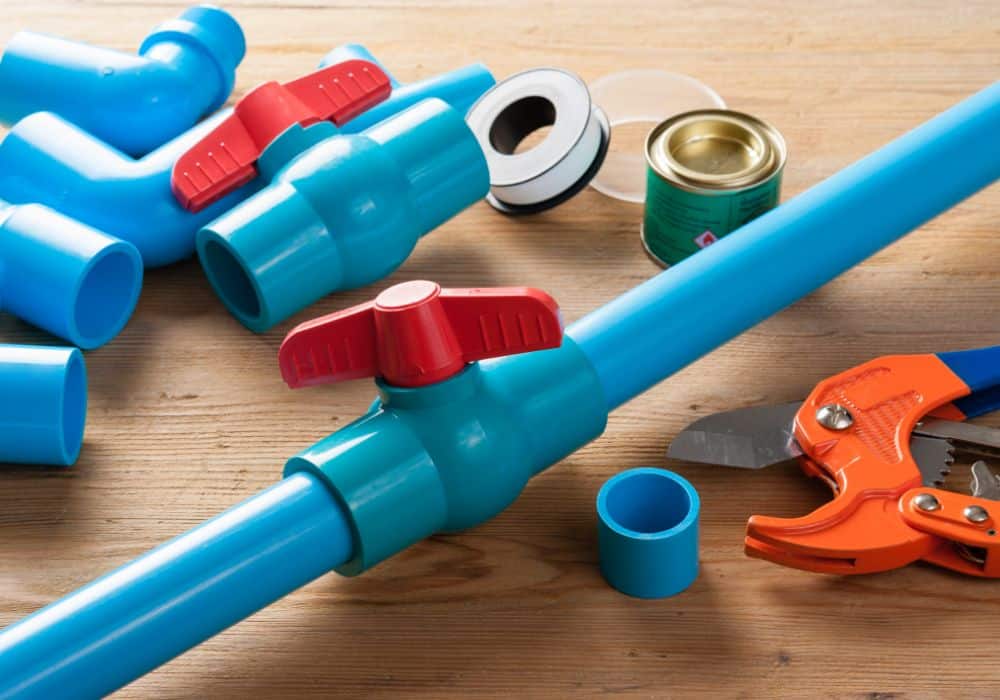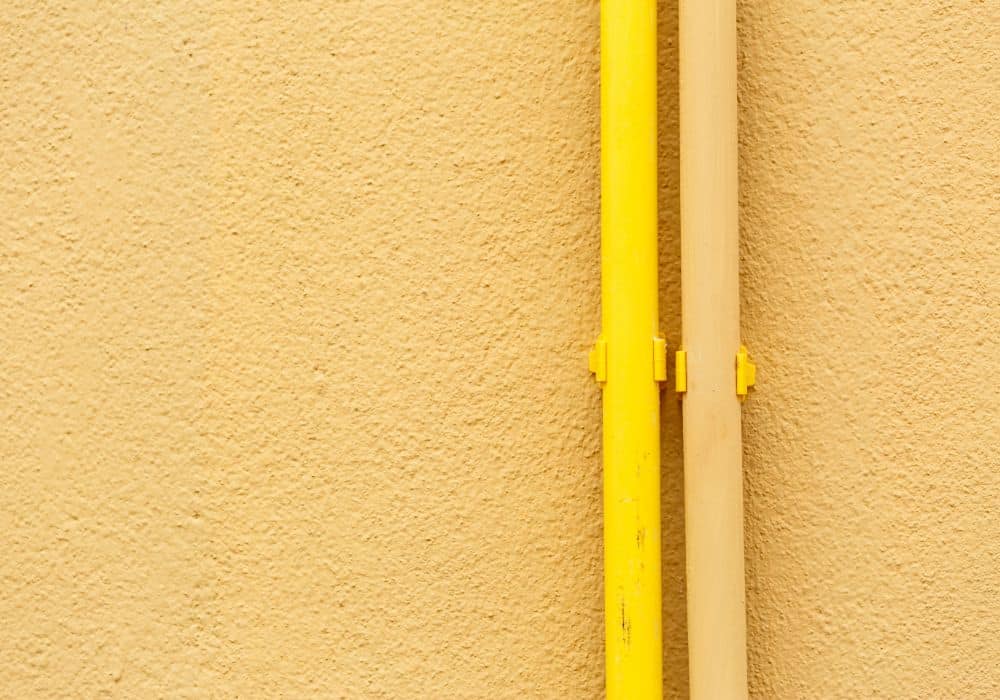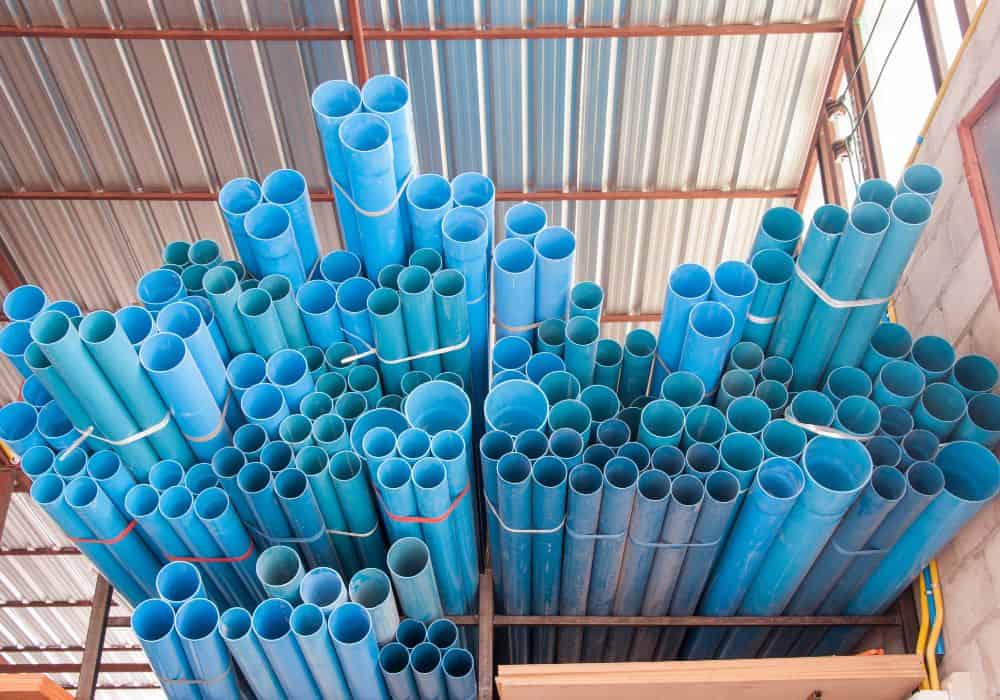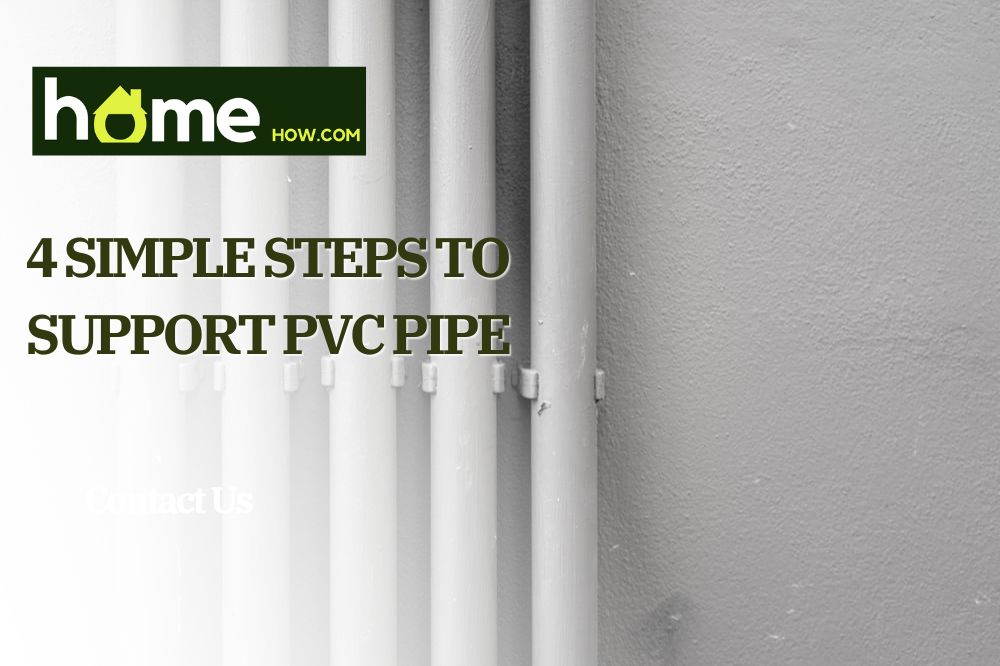Using the proper supports and hangers for any piping system is crucial to its performance. Apart from using the correct supports for the pipes, it is also crucial to space them correctly. PVC pipes function differently from other piping materials, so how do you support them?
Supporting PVC Pipes: What to Consider

If you want to support PVC pipes, the pipes may be hanging above the ground or outdoors. Several factors are vital when considering how to support these pipes, especially when you check how well PVC handles low and high temperatures.
You can use roller hangers or bend hangers to support the pipe material. But note that there are different types of roller hangers, and the ones you use will depend on the style and pipe installation.
There are also options for pipe clamps, U-bolts, clevis hangers, roller stands, roller chairs, and anchor straps. These are only some of the supports available for PVC piping, but you can check other options to see what fits the construction and material.
It is important to note that the support you use may affect how the pipe performs in the long run. PVC tends to break easily and does not last as long as other piping materials. So, the screws and fittings on the hangers and supports can corrode the pipe and prematurely damage it. Remember this when selecting the type of support and consider the location of the pipes.
1. Selecting the Right PVC Pipe Support
Different supports and hangers for metal piping materials also work for PVC and other thermoplastics. However, the support must have the proper surface for load-bearing purposes. In other words, the bearing surface must be devoid of sharp edges or rough areas that can damage the pipe.
The wrong supports for a PVC pipe can cause it to sag quickly. Also, temperature fluctuations can cause thermal expansion and contraction, and these, in turn, can make the pipe move. Pressure changes also cause pipe movement, eventually affecting the support or hanger.
2. Spacing the Pipe Support
Apart from selecting the right hanger for the pipe, you must also consider the spacing. Wrongly spacing the support on the pipe can affect its functionality in the long run. As a thermoplastic, a PVC pipe must have the correct support spacing corresponding with its size, location, and weight of the fluids it regularly conveys.
Operating temperatures are also vital to how the pipe performs within the support. The reason is that PVC material’s tensile and comprehensive strength change according to temperatures. So, how you support PVC pipes depends on the temperature fluctuations in the area. The higher the temperatures, the more support you will need for the pipes. We will talk more about this later.
You can calculate the right support spacing for PVC pipes the same way you check the support spacing for metallic systems. Use continuous and simple beam calculations; check and use the material’s maximum fiber stress at the selected temperature.
In addition, the frequency of spacing depends on the diameter of the pipes. Building and plumbing codes stipulate that horizontal PVC pipes require support every three feet. But this rule applies to PVC pipes with half-inch to one-inch diameters. The spacing frequency becomes four feet if the pipe’s diameter is more than one inch.
3. Placing the Pipe Support
It is common practice to place pipe supports within two feet of each pipe joint side. If there is a change in the pipe’s direction, the supports must be placed close to the fitting in such a way as to lower possible tensional stress.
This pipe support does not necessarily carry other fittings such as tees, flanged assemblies or flanges, and valves. Each component must have individual supports to avoid overburdening the pipe support.
In the case of valves, there should be adequate bracing so that there will be little or no stress loads due to operational torque. Then, support placement should consider the possibility of solids accumulating within the pipe, so you do the proper placement.
4. Temperature Fluctuations
When choosing the support or hanger for a PVC pipe, you must consider the location and temperature. In other words, the temperature of an area significantly affects the PVC performance because temperature fluctuations can cause the pipe to expand and contract.
The PVC support must make allowances for this occurrence to avoid clamping down too hard on the pipe and damaging it. This is especially true if you use clamp hangers to support the pipe. Note that plastic expands significantly more than steel or other metals. So, the support must not restrict the movement.
As mentioned, the support spacing must consider the maximum operating temperature. Therefore, the supports must come at uniform centers and be done so as not to restrict axial movements.
To give a clearer picture of the hanger spacing based on temperatures, you must look at PVC Schedule 40 and Schedule 80. Typically, PVC does not function past a temperature of 140 degrees Fahrenheit. Any temperature higher than that may damage the piping material.
You must also correspond the nominal pipe size to the operating temperature at any given time to get the recommended support spacing. For example, if you have PVC with a nominal pipe size of 1 inch laid horizontally and an operating temperature of 60 degrees Fahrenheit, the support spacing should be four and a half feet.
However, the support spacing drops with the same PVC type or nominal pipe size but with a different operating temperature. The higher the temperature goes, the smaller the spacing needs. The same applies to PVC pipe Schedule 80.
Installing a PVC Pipe Support

To install the support for a PVC pipe, you must follow specific steps to place the pipe accurately. Poor pipe installation can greatly affect how the support works and may damage the pipe in the long run.
So, here are summarized steps to install a PVC pipe and fix the support:
1. Ensure you have the right pipe length for the specific purpose
Cutting the pipe is straightforward, but you must have a straight edge at the pipe’s end to ensure a good fit. It is best to follow detailed specifications to get the correct angles on the joints. Otherwise, you may skew the joint and damage the project.
2. Check the length against the installation space before smoothing or deburring the edges
It is better to have a length that extends beyond the required measurement than to have a shorter pipe. You can always cut the pipe again to achieve the right length, but you cannot fix a pipe that is too short for the job.
3. Deburr and clean out the shavings on the edges
Once you are sure that the length is correct, deburr and clean out the shavings on the edges. This step helps to smoothen the inside part of the pipe. Next, prime these edges using a primer to achieve a clean feel and look. Then, clean out the primed area with a cleaner and cement it.
4. Get the pipe hanger or support and prepare for installation
Now, get the pipe hanger or support and prepare for installation. This is the last step, but it is one of the most crucial. The reason is that the PVC support can make or mar the pipe’s performance. Use the right hanger for vertical or horizontal installations, check the maximum operating temperature, and create adequate support spacing.
Using Anchors and Guides

Anchors and guides come in handy when supporting a PVC piping system. Anchors work by directing the movements of the pipes in the system. This restricts the movements in specific locations. Consequently, anchors can control movements resulting from contraction or expansion, vibrations, and pressure surge forces.
Guides work by directing the movements between anchor points. That way, they prevent lateral or transverse movements but allow axial movements. However, an engineer is in the best position to build anchors and guides to achieve purpose without overloading the system and damaging it.
Steps to Protect PVC Pipes
Several precautionary steps help to protect PVC pipes when you install supports. Sometimes, the supports may be too harsh or abrasive for the piping material. So, placing pads and sleeves between the supports or hangers and the pipes may be necessary for protection.
The pads and sleeves will also help to spread the stress loads over a more extensive surface area to reduce the burden on specific areas. This precautionary step will cause the pipe to last longer than usual.
In addition, consider using adequate shielding for the piping system if there are high temperatures to prevent damage. Constant high operating temperatures can deform the plastic material and other fittings. If possible, keep the pipe from coming in contact with liquids or equipment capable of producing high temperatures.
Takeaway
PVC pipe support is a technical step that only engineers and trained personnel must provide. There are several aspects to it, and the support material is only one of them. You must consider the operating temperature, installation, support spacing, placement, and weight distribution.
Some local and state codes regulate this installation to ensure safety and performance. Therefore, checking and abiding by local code is crucial. Contact the appropriate authorities to determine what applies in specific locations and follow the guidelines.
